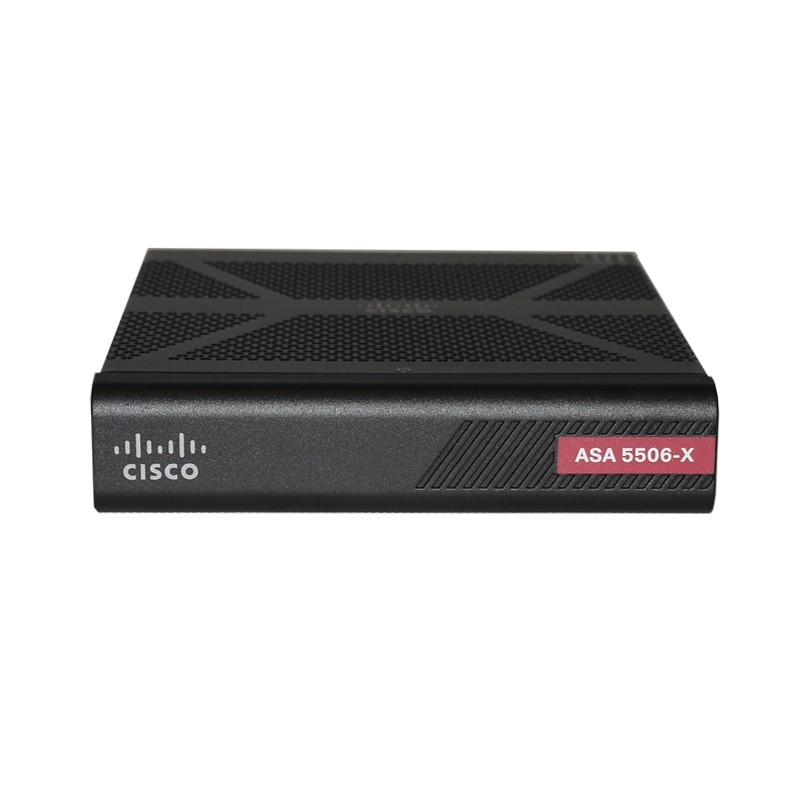- Meraki Client Vpn Download
- Configure Meraki Vpn Client
- Meraki Vpn Setup Windows 10
- Meraki Download Client
- Meraki Vpn Client Download
- Meraki Vpn Client Software
Cisco Meraki’s unique auto provisioning site-to-site VPN connects branches securely, without tedious manual VPN configuration. Leveraging the power of the cloud, MX Security Appliances configure, monitor, and maintain your VPN so you don't have to.
Cisco Meraki’s unique auto provisioning site-to-site VPN connects branches securely with complete simplicity. Using IPsec over any wide area network, the MX links your branches to headquarters as well as to one another as if connected with a virtual Ethernet cable. Customers accessing or moving services to the Amazon Web Services cloud can use Auto VPN to connect directly to a virtual MX inside their Virtual Public Cloud.
- Vpn Meraki Aws, p2p vpn avira, Download Hotspot Shield Vpn Untuk Pc, Nordvpn Slow Connection.
- Efficiently maintain the best experience for every application on your network.
MX Security Appliances automatically configure VPN parameters needed to establish and maintain VPN sessions. A unique cloud-enabled hole-punching and discovery mechanism enables automatic interconnection of VPN peers and routes across the WAN, and keeps them updated in dynamic IP environments. Security associations and phases, authentication, key exchanges, and security policies are all handled automatically by MX VPN peers. Site-to-site connectivity is established through a single click in the Cisco Meraki dashboard. Intuitive tools built in to the Cisco Meraki dashboard give administrators a real-time view of VPN site connectivity and health. Round trip time latency between peers and availability status information automatically keep track of all the VPN peers in the network.
Sandy Roberts is technology admirer and a computer specialist who is always curious for new Meraki Auto Vpn Split Tunnel technological advancements in Meraki Auto Vpn Split Tunnel the IT industry. With her extensive experience and apprehension of IT industry and technology, she writes after concrete research and analysis with the intention to aid the reader the content full of factual information. My org uses Meraki MX firewalls as VPN endpoints. Up until now we've just been using the native Windows 10 VPN client. However, I've been tasked with finding a 3rd party alternative. Some of our users don't like the Windows 10 client and others are complaining that their VPN settings are wiped out after large Windows updates. Meraki VPN Client Setup. This short and sweet script will help with setting up the Windows VPN to use with Cisco Meraki firewall/routers. You can either run it raw or it can be included in your automation to deploy workstations at scale.
Flexible tunneling, topology, and security policies
Configurations for split-tunneling and full-tunneling back to a concentrator at headquarters are fully supported and configured in a single click. Hub-and-spoke and full mesh VPN topologies give deployment flexibility, and a built-in site-to-site firewall enables custom traffic and security policies that govern the entire VPN network.
Cloud Managed Security Appliances
See features, specifications, and pricing for Cloud Managed Security Appliances.
This page provides instructions for configuring client VPN services through the Dashboard.
For detailed instructions on how to configure a client VPN connection on various client device platforms, please refer to:
Client VPN
The client VPN service uses the L2TP tunneling protocol and can be deployed without any additional software on PCs, Macs, iOS devices, and Android devices, since all of these operating systems natively support L2TP VPN connections.

Note: TLS (SSL) Client VPN is supported on the MX with AnyConnect. To learn more, see AnyConnect on the MX
Note: Linux-based operating systems can support client VPN connections as well, although third-party packages may be necessary to support L2TP/IP.
Note: Establishing a client VPN connection when the client is located on the LAN of the MX is unsupported.
Encryption Method
Client VPN uses the L2TP/IP protocol, with the following encryption and hashing algorithms: 3DES and SHA1 for Phase1, AES128/3DES and SHA1 for Phase2. As a best practice, the shared secret should not contain any special characters at the beginning or end.
Owing to changes in the PCI-DSS Standard version 3.2.1, some auditors are now enforcing requirements for stronger encryption than the Meraki Client VPN default settings provide. Please contact Meraki Support if you need these values adjusted, but please be aware that some client devices may not support these more stringent requirements (AES128 encryption with DH group 14 - Required by PCI-DSS 3.2.1).

Client VPN Server Settings

To enable Client VPN, choose Enabled from the Client VPN server pulldown menu on the Security Appliance > Configure > Client VPN page. The following Client VPN options can be configured:
- Client VPN Subnet: The subnet that will be used for Client VPN connections. This should be a private subnet that is not in use anywhere else in the network. The MX will be the default gateway on this subnet and will route traffic to and from this subnet.
- Hostname: This is the hostname of the MX that Client VPN users will use to connect. This hostname is a DDNS host record correlating to the Public IP address of the MX. You can change this hostname by following the instructions here.
- DNS server: The servers VPN Clients will use to resolve DNS hostnames. Chose from Google Public DNS, OpenDNS, or specifying custom DNS servers by IP address.
- WINS server: If VPN clients should use WINS to resolve NetBIOS names, select Specify WINS Servers from the drop-down and enter the IP addresses of the desired WINS servers.
- Shared secret: The shared secret that will be used to establish the Client VPN connection.
- Authentication: How VPN Clients will be authenticated (see below).
- Systems Manager Sentry VPN security: Configuration settings for whether devices enrolled in systems manager should receive a configuration to connect to the Client VPN (see below Systems Manager Sentry VPN Security section).
Authentication
Meraki Client Vpn Download
Meraki Client VPN uses the Password Authentication Protocol (PAP) to transmit and authenticate credentials. PAP authentication is always transmitted inside an IPsec tunnel between the client device and the MX security appliance using strong encryption. User credentials are never transmitted in clear text over the WAN or the LAN. An attacker sniffing on the network will never see user credentials because PAP is the inner authentication mechanism used inside the encrypted IPsec tunnel.
The authentication itself can be performed by using these three options: the Meraki cloud, RADIUS, or Active Directory. Below, the three options are discussed.
Meraki Cloud Authentication
Use this option if an Active Directory or RADIUS server is not available, or if VPN users should be managed via the Meraki cloud. To add or remove users, use the User Management section at the bottom of the page. Add a user by clicking 'Add new user' and entering the following information:
- Name: Enter the user's name.
- Email: Enter the user's email address.
- Password: Enter a password for the user or click 'Generate' to automatically generate a password.
- Authorized: Select whether this user is authorized to use the Client VPN.
To edit an existing user, click on the user under the User Management section. To delete a user, click the X next to the user on the right side of the user list.
When using Meraki hosted authentication, the user's email address is the username that is used for authentication.
RADIUS
Use this option to authenticate users on a RADIUS server. Click Add a RADIUS server to configure the server(s) to use. Enter in the IP address of the RADIUS server, the port to be used for RADIUS communication, and the shared secret for the RADIUS server.
For more information on how to configure Radius authentication for Client VPN, refer to the documentation on Configuring RADIUS Authentication with Client VPN.
Note: If multiple RADIUS servers are configured, RADIUS traffic will not be load balanced.
Active Directory
Use this option if user authentication should be done with Active Directory domain credentials. You will need to provide the following information:
- Short domain: The short name of the Active Directory domain.
- Server IP: The IP address of an Active Directory server on the MX LAN or a remote subnet routable through AutoVPN.
- Domain admin: The domain administrator account the MX should use to query the server.
- Password: Password for the domain administrator account.
For example, considering the following scenario: Users in the domain test.company.com should be authenticated using an Active Directory server with IP 172.16.1.10. Users normally log into the domain using the format 'test/username' and you have created a domain administrator account with the username 'vpnadmin' and the password 'vpnpassword'.
- The Short domain would be 'test'.
- The Server IP would be 172.16.1.10.
- The Domain admin would be 'vpnadmin'.
- The Password would be 'vpnpassword'.
Refer to the Active Directory documentation for more information about integrating AD with Client VPN.
Note: At this time, the MX does not support mapping group policies via Active Directory for users connecting through the Client VPN.
Systems Manager Sentry VPN Security
When using Meraki cloud authentication, Systems Manager Sentry VPN security can be configured If your Dashboard organization contains one or more MDM networks. Systems Manager Sentry VPN security allows for devices enrolled in Systems Manager to receive the configuration to connect to the Client VPN through the Systems Manager profile on the device.

To enable Systems Manager Sentry VPN security, choose Enabled from the Client VPN server pulldown menu on the Security Appliance > Configure > Client VPN page. You can configure the following options:
- Install Scope: The install scope allows for a selection of Systems Manager tags for a particular MDM network. Devices with these tags applied in a Systems Manager network will receive a configuration to connect to this network's Client VPN server through their Systems Manager profile.
- Send All Traffic: Select whether all client traffic should be sent to the MX.
- Proxy: Whether a proxy should be used for this VPN connection. This can be set to automatic, manual, or disabled
Configure Meraki Vpn Client
When using Systems Manager Sentry VPN security, the username and password used to connect to the client VPN are generated by the Meraki cloud.
Usernames are generated based on a hash of a unique identifier on the device and the username of that device. Passwords are randomly generated.
Client VPN Connections
After configuring Client VPN and users are starting to connect, it may be useful to see how many and what client devices are connected to your network via Client VPN. To see connected Client VPN devices, navigate to Network-wide > Clients > click the dropdown icon on the Search clients... search bar > make sure to select Client VPN and either Online, Offline or both.
Meraki Vpn Setup Windows 10
Group Policies
Meraki Download Client
It is possible to manually apply group policies to clients connected via Client VPN. Group Policy applied to a client VPN user is associated with the username and not the device. Different devices that connect to Client VPN with the same username will receive the same group policy. For more help on assigning or removing group policies applied to a client, refer to the Creating and Applying Group Policies document.
Meraki Vpn Client Download
Note: It is not possible to assign group policies automatically once a user connects to Client VPN.
Meraki Vpn Client Software
FAQs Page
If further guidance is required, please feel free to visit the FAQs page built into Client VPN page (Security Appliance > Configure > Client VPN > FAQs). The FAQs contain answers and links (KB Articles and Dashboard pages) to the most common Client VPN inquiries. Below is a snippet of the FAQs page.
